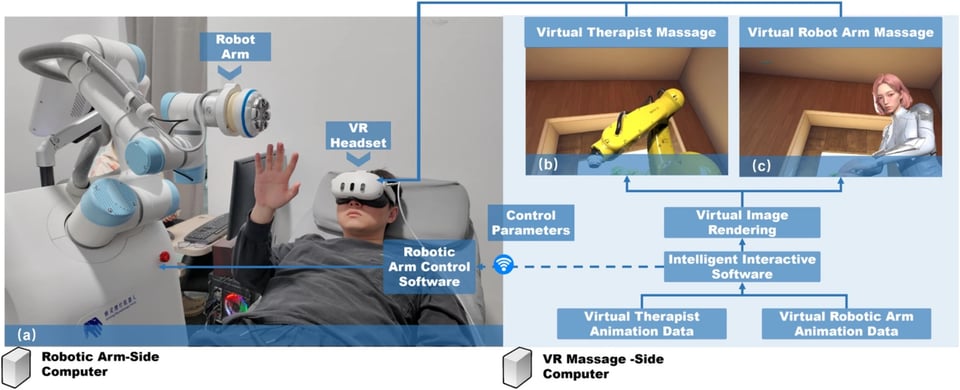Research Roundup (#18)
.png/:/rs=w:1440,h:1440)
Welcome...
Welcome to the eighteenth-ever Research Roundup! A weekly catch-up on the latest developments in the field of XR research.
It’s been a busy week, so let's not hang around.
New technical research this week has revealed self-powered haptic gloves that generate tactile feedback without batteries, whilst research on field of view restrictions has highlighted compensatory head movements during walking and street crossing activities.
Heritage and tourism applications continue to develop, with researchers documenting preservation strategies for pioneering XR technologies like Heilig's Sensorama, proposing standardised frameworks for AR/VR museum integration, and comparing how narrated virtual tours affected presence while live streaming influenced place attachment.
And finally, psychological applications of XR were investigated this week, with MR interfaces reducing psychological barriers during robot massages despite causing eye strain, VR social simulations identifying anxiety patterns in adolescents with psychotic-like experiences, and neuroadaptive VR-EEG interfaces examining connections between imagined movement and time perception.
The Week in 300 (words)
Haptic feedback made a minor leap forward this week as researchers from Hong Kong reported on the development of a haptic glove that doesn’t need batteries (or cumbersome leads). Whilst the idea of wearing haptic gloves to enhance XR experiences is nothing new (it's really old) the idea of a soft glove that provides haptic feedback but powers itself very much is. Making use of the triboelectric discharge effect and gas discharge tubes, the glove is able to harvest energy and use it to provide electrical stimulation to the skin eliciting neural excitation which is interpreted by the brain as touch. Cool. More details here.
If there is a sector that has really embraced XR, that isn't medicine, then it has to be the worlds of cultural heritage and tourism. The potential is clear as immersive technologies allow users to engage with historical landmarks many miles away, talk to avatars in different virtual time periods, and inspect digitally recreated ancient artifacts. Indeed it feels like every week there is another example of it being exploited in a museum. To help the cause, researchers this week published extensive guidance covering example use cases, measurement tools, best practice and a novel architecture, to help guide the uninitiated. As XR adoption pushes further up the agenda such articles are increasingly becoming invaluable.

And finally, ever felt it's a bit weird when that robot arm gives you a massage? Apparently you're not alone. Researchers in Beijing have investigated whether superimposing a virtual masseur, using mixed reality, can help people deal with the slight awkwardness that goes with being rubbed down by a robot. Across three conditions they manipulated whether participants could see the real world, a virtual version with a robot arm, or a virtual version with a slightly cyborg looking female masseuse.They found that the virtual massage therapist led to greater trust and engagement, and system acceptance. So next time you feel a twinge in your back and head for the robot arm, don't forget to take your headset with you.
Paper of the Week
The paper of the week was hotly contested but in the end had to be won by this rather wonderful preprint from the good folks at the Immersive Archive.
In fact, this section might be better re-framed as ‘Resource of the Week’ as the discovery of the The Immersive Archive was the biggest takeaway for us.
In the paper itself it documents the process and considerations involved in archiving Morton Heilig's Sensorama and Ivan Sutherland's original Head Mounted Display.
If you’ve not been there already then we strongly recommend downloading the immersive experience of the Sensorama in particular. For those of you that know your VR history you will know the importance of Morton Heilig's device, and if you don't then seriously look it up.
What the experience allows you to do is to not only inspect a full 3D replica of the device, but once you put your head in the right place you can experience two of the original films (remastered).
I'm not easily impressed but being able to experience the original 'VR' films from the 60s was something special, and I'm forever grateful for everyone involved in the project. You must try it.
Find this digest useful?